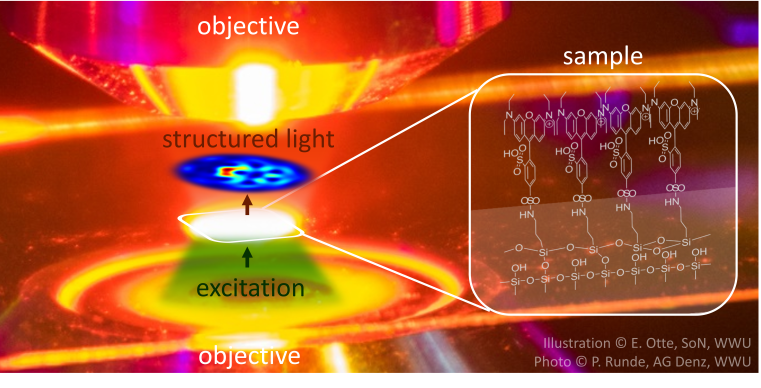Structured light imaging at the nanoscale
What we can see with our own eyes or observe using standard optical imaging systems is limited to a small fraction of the information that the detected light actually carries. Two-dimensional (2D), flat images, such as a photo, only reveal the intensity and color of the light coming to us from an optical scene. However, light contains a wealth of information on the three-dimensional (3D) position, angle of incidence, spectral context, coherence, amplitude, phase, polarization, optical angular momenta, among others. In fact, if light interacts with media, nature will give us structured light spatially varying in the named properties depending on the interaction. Different techniques nowadays allow for the analysis of some of these properties, however, require complex experimental systems with bulky non-versatile optical components and/ or data postprocessing. In particular, various nanoscale properties of 3D non-paraxial structured light could not be made available so far, thus, crucial information about the nature of the interacting media stays hidden. The aability to access these properties could have a transformative impact on the development of imaging systems for today’s world, as in automotive applications, robotics, surveillance, augmented/virtual reality, (bio)medicine, or optical fields as nanophotonics.
The overarching question we tackle in a collaborative project between SoN and the Geballe Laboratory for Advanced Materials, Stanford University, USA, is how to detect, analyze and process the till now inaccessible information of structured light to advance today’s imaging technologies. Recent advances in nanophotonics and metamaterials may provide promising innovative tools and methods to perform this task. By designing and implementing nanostructured optical coatings, namely metasurfaces, within imaging systems, we pave the way to extracting and processing typically invisible information from an optical scene. Among others, this approach can lead to next-generation imaging of molecular nanostructures, allowing novel insights into a typically hidden nano-scale world.
Keywords: structured light; non-paraxial light; metasurfaces; nanophotonics; optical imaging; fluorescence microscopy; molecular nanostructures


